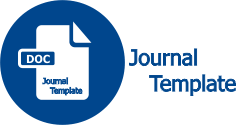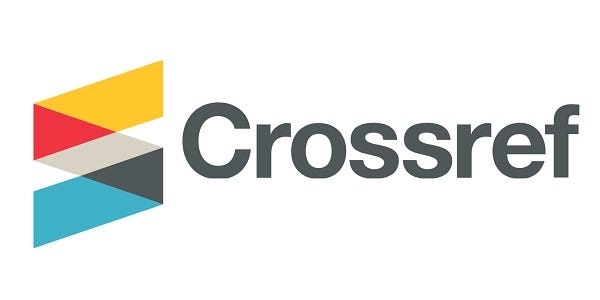Pemanfaatan Artificial Intelligence (AI) Dalam Transformasi Digital Untuk Pelayanan Publik
DOI:
https://doi.org/10.47080/jmb.v6i1.3233Keywords:
Artificial Intellegencia, Transformasi Digital, Pelayanan PublikAbstract
Penelitian ini menggunakan jenis penelitian atau metode penelitian kualitatif. Yakni berupa pemaparan Tujuannya adalah untuk mengetahui sejauh mana manfaat program AI untuk memberikan kemudahan layanan bagi masyarakat, pemerintah setelah melakukan transformasi digital pelayanan publik dengan memanfaatkan kecerdasan buatan atau artificial intelligence (AI). Deputi Bidang Pelayanan Publik Kementerian Pendayagunaan Aparatur dan Reformasi Birokras (PANRB) Diah Natalisa mengatakan bahwa pelayanan digital menjadi krusial, dan membuat layanan dapat diakses secara efektif dan efisien.Tidak seperti pelayanan tradisional yang mengharuskan adanya tatap muka langsung secara fisik, pelayanan digital memungkinkan layanan dapat diakses setiap saat, dimanapun tanpa harus berpindah lokasi, sehingga lebih praktis, efektif, dan efisien,” ujarnya Diah dalam Webinar Pengembangan dan Pemanfaatan AI untuk Digital Government secara virtual, Jumat (10/03/2020).Dalam implementasinya, transformasi penyelenggaraan pelayanan publik akan optimal apabila ada integrasi proses bisnis dan sistem. Untuk itu, Peraturan Presiden No. 95/2018 tentang Sistem Pemerintahan Berbasis Elektronik (SPBE) hadir untuk mengawal keterpaduan proses digitalisasi layanan publik di Indonesia.
References
Amplayo, R. K., Kim, J., Sung, S., & Hwang, S. W. (2018). Cold-start aware user and product attention for sentiment classification. Proceedings of the 56th Annual Meeting of the Association for Computational Linguistics, (pp. 2535–
. Melbourne.
Anderson, J. E. (2003). Public Policymaking: An Introdutcion; Fifth Edition. Boston: Houghton Mifflin Company.
Antonakis, J., Avolio, B. J., & Sivasubramaniam, N. (2003). Context and leadership: An examination of the ninefactor full-range leadership theory using the Multifactor Leadership Questionnaire. The Leadership Quarterly, 14, 261-295.
Arnett, D. B., Sandvik, I. L., & Sandvik, K. (2018). Two paths to organizational effectiveness–Product advantage and life-cycle flexibility. Journal of Business Research, Vol. 84 No. 3, 285-292.
Badan Kepegawaian Negara. (2019,Mei 22). Kanal Berita Badan Kepegawaian Negara. Retrieved from Official Website Badan Kepegawaian Negara: https://www.bkn.go.id/berita/ enam-aktivitas-ujaran-kebencian- berkategori-pelanggaran-disiplin-asn.
Badan Kepegawaian Negara. (2020, Juli 23).Renstra BKN. Retrieved from Official Website BKN: https://www.bkn. go.id/wp-content/uploads/2015/11/ RENSTRA-2015-2019-BKN- UPLOAD-MENPAN.pdf
Bass, B. M.,& Riggio, R. E. (2006).Transformational Leadership (2nd ed.). New Jersey: Lawrence Erlbaum Associates, Inc.
Birkland, T. A. (2015). An Introduction to The Policy Process: Theories, Concepts, and Models of Public Policy Making; Third Edition. New York: Routledge.
Birokrasi, M. P. (2018, 10 25). Forum Merdeka Barat 9. Retrieved from fmb9. id: fmb9.id/document/1540524983_ MENPANRB.pdf
Blessinger, K., & Maureen, O. (2004).Content analysis of the leading generalacademic databases. Library Collections, Acquisitions, and Technical Services, 28(3), 335-346.
Bullock, J. B. (2019). Artificial Intelligence, Discretion, and Bureaucracy. American Review of Public Administration, 1-11. Cameron, K. S. (1981). Domains of organizational effectiveness in colleges and universities. Academy of Management Journal, Vol. 24 No. 1,25-47.
Chien, C. F., & Chen, L. F. (2008). Data mining to improve personnel selection and enhance human capital: A case study in high-technology industry. Expert Systems with applications,34(1), 280-290.
Creswell, J. W. (2014). Research Design: Pendekatan Kualitatif, Kuantitatif, dan Mixed (Edisi Ketiga). Terjemahan oleh Achmad Fawaid. Yogyakarta: Pustaka Pelajar.
Cruz, D. V., & Almazan, R. S. (2018). Towards an Understanding of Artificial Intelligence in Government. Proceedings of the 19th Annual International Conference on Digital Government Research: Governance in the Data Age (pp. 1-2). Delft: Association for Computing Machinery.
Daft, R. L. (1998). Organization: Theory and Design (6th ed.). Cincinnati: South Western College Publishing.
Dou, Z. Y. (2017). Capturing user and product information for document level sentiment analysis with deep memory network. Proceedings of the 2017 Conference on Empirical Methods in Natural Language Processing, (pp. 521-526). Copenhagen.
Dunn, W. N. (2003). Pengantar Analisis Kebijakan Publik. Yogyakarta: Gadjah Mada University Press.
Giotopoulos, K. C., Alexakos, C. E., & Beligiannis, G. N. (2005). Integrating Agents and Computational Intelligence Techniques in E-learning Environments. IEC, (pp. 231-238). Prague.
Goralski, M. A., & Tan, T. K. (2020). Artificial intelligence and sustainable development. The International Journal of Management Education, 18(1), 100330.
Habimana, O., Li, Y. H., Li, R. X., Gu, X. W., & Yu, G. (2020). Sentiment analysis using deep learning approaches: an overview. Science China Information Sciences Vol.63, 1-36.
Hakimpoor, H., Arshad, K. A., Tat, H. H., Khani, N., & Rahmandoust, M. (2011). Artificial Neural Networks’Applications in Management. World Applied Sciences Journal 14 (7), 1008-1019.
HUMAS BPPT. (2020, Mei 07). Berita Layanan Publik. Retrieved from Official Website BPPT: https://www.bppt. go.id/layanan-informasi-publik/3919- pemerintah-siapkan-strategi-nasional- kecerdasan-buatan-ai.
HUMAS MENPANRB. (2020, Juli 20). ASN Unggul Jadi Kunci Keberhasilan e-Services. Retrieved from Website Kementrian PAN RB: https://menpan. go.id/site/berita-terkini/asn-unggul- jadi-kunci-keberhasilan-e-services
HUMAS MENPANRB. (2020, Juni 25). Tiga Pilar Penopang Terwujudnya Tatanan Birokrasi Baru. Retrieved from Official Website Menpan RB: https:// www.menpan.go.id/site/berita-terkini/ tiga-pilar-penopang-terwujudnya- tatanan-birokrasi-baru
Jones, G. R. (2010). Organizational Theory, Design, and Change. New Jersey: Prentice Hall.
Kaczmarek, T., Kowalkiewicz, M., & Piskorski, J. (2005). Information extraction from CV. The 8th International Conference on Business Information Systems, (pp. 3-7).
Lachman, R., & Wolfe, R. A. (1997). The interface of organizational effectiveness and corporate performance: Opportunities for research and theory development. Business & Society,36(2), 194-214.
Lambert, V. A., & Lambert, C. E. (2012).Qualitative descriptive research: An acceptable design. Pacific Rim International Journal of Nursing Research, 16(4), 255-256.
Liu, B., & Zhang, L. (2012). A survey of opinion mining and sentiment analysis. Boston: Springer.
Lubis, S. H., & Huseini, M. (2009). Pengantar Teori Organisasi, Suatu Pendekatan Makro. Depok: Departemen Ilmu Administrasi Fakultas Ilmu Sosial dan Ilmu Politik Universitas Indonesia.
Poria, S., Cambria, E., & Gelbukh, A. (2016). Aspect extraction for opinion mining with a deep convolutional neural network. Knowledge-Based Systems Vol.108, 42-49.
Riza, H., Nugroho, A. S., & Gunarso. (2020). Kaji Terap Kecerdasan Buatan di Badan Pengkajian dan Penerapan Teknologi. Jurnal Sistem Cerdas 2020 Vol 03 - No 01, 1-24.
.



1_(1).jpg)





